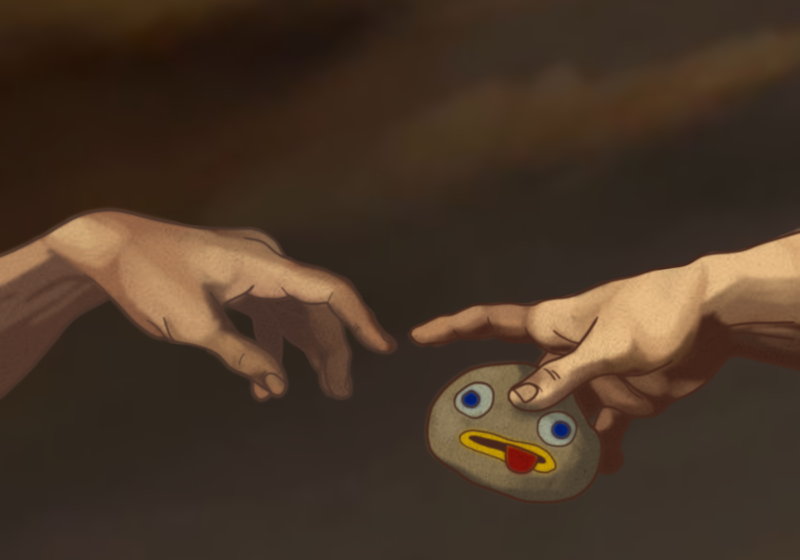Jane: Hi, my name is Jane. I’ve watched “Over the Garden Wall” way too many times.
Wil: Hi, My name is Wil. I’ve watched “Over the Garden” wall once, in two-episode increments, way too early in the morning.
“Over the Garden Wall” is a 10-episode cartoon show about two kids, half-brothers named Wirt and Greg, trying to find their way home in a forest full of talking animals, singing people, and a dose of nightmare fuel. Also, Wirt wears a dunce cap and Greg wears a teapot on his head.
There are really only two ways to watch this show. You can wrap yourself up in an afghan blanket, hunker down on the couch, and clutch some seasonally appropriate beverage. Twenty minutes later, you’re feeling refreshed and ready to take on whatever mundane chores the world has to throw at you.
Jane: Or you can go full “Rocky Horror Picture Show” with your friends and watch the entire series in a pumpkin spice fuelled autumnal bacchanalia, screaming the lyrics to “Potatoes and Molasses” at full volume for the next two hours. Someone is dressed like a gnome. Another person is wearing a pumpkin head. God’s in his heaven. All is right with the world.
I love “Over the Garden Wall.” Maybe it has to do with my obsession with otherworldly epics in which a pilgrim goes on a sacred journey (a weirdly specific genre, think Wu Cheng’en’s “Journey to the West” and Dante Allighieri’s “Divine Comedy”), but hear me out: what if you combined Dante’s “Inferno” with direct references to Max Fleischer and Walt Disney’s early animated shorts? What on earth are they doing in a world defined by 19th to 20th century Americana?
Wil: You have a much stronger sense of references with this show than I do. That I can’t recognize the references and genetic makeup of the universe might actually be what made it so immediately compelling to me. I’d never seen a world like this.
Jane: Part of the magic of its mysterious setting is figuring out how it all fits together. This is a show that is meant to be rewatched at least a couple times, and you’re probably not going to understand every reference or foreshadowing clue that appears on the first watch.
Even as a self-proclaimed “expert” on the series, I find myself noticing new references on each rewatch. Throwaway gags that seem nonsensical on the first watch are a punch in the gut the second time. Within the span of two hours, you’ve got a complete chronicle that wraps up tidily, but not so much so that you don’t come back with more questions.
Wil: In addition to that ambiguity, one of the things that’s stuck with me since I finished watching was the show’s music. Not every episode has a musical number, but there’s always something interesting happening in the soundtrack. It’s an amalgamation of folk songs, jazz standards, and operatic dirges that’s recognizable but implacable.
Jane: Right! The visual style of the show seems to hit a lot of the same notes as the music in terms of pulling from a ton of references from a variety of cultures and time periods — low-Flemish grisaille paintings, Hayao Miyazaki, the illustrations of Gustave Doré, and so on. Yet it still manages to create a cohesive and recognizably “American” style.
Wil: For me, that gives the show a really nice cozy-creepy mood. I feel like I recognize what I’m seeing and hearing, but I’m not sure from where. So it’s comfortable but a little unsettling.
Jane: You once told me that watching this show would traumatize you as a kid. I feel like one of the things about this show that really plays into its favor — particularly in its scarier episodes — is the length of the series. It’s really difficult for creators to sustain the same level of suspense over the course of multiple seasons.
Wil: It’s short, so it never runs out of steam in terms of the creepy factor. Plus, there are long stretches (and some entire episodes) where nothing creepy happens. The spookiness is lightly applied, so it never gets old. It leaves room for the show to get silly, while still maintaining a sense of stakes and tension. At its core, this is a children’s show, and the suspenseful atmosphere highlights a really fun dynamic between Greg and Wirt. Wirt’s resentment and Greg’s innocence are funny, but their loyalty taps into themes of family and responsibility that tie the series together.
Jane: Speaking of tying the series together, how do you feel about the show working as a standalone season? I’ve mentioned this to a couple of my friends and they often express disappointment in there only being 10 episodes in total.
Wil: I really liked how it wrapped up. It’s satisfying yet ambiguous. Everything we see in the show seems so deliberate and consequential, and I’m not sure if that could be maintained for too much longer.
Jane: Of course, fans who were unsatisfied with the length of the series can always turn to the ongoing “Over the Garden Wall” comic series by the original creators!
Wil: Or you can be like me and listen to the soundtrack on loop for the entire fall.
Jane: “Over the Garden Wall” is well worth your time, whether watched in increments by yourself or with your friends/friends and family members in a tasteful binge.




